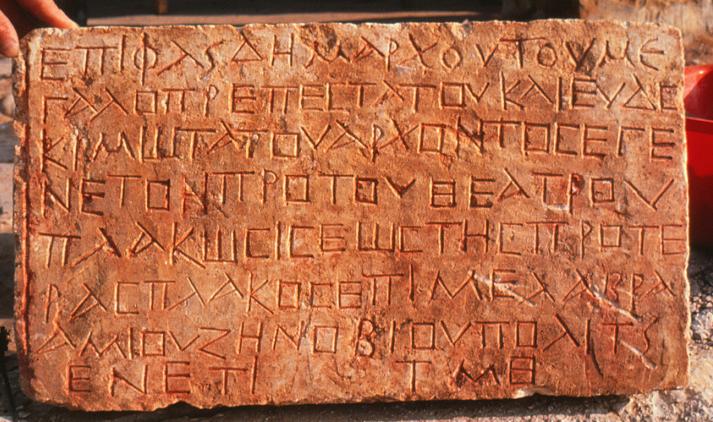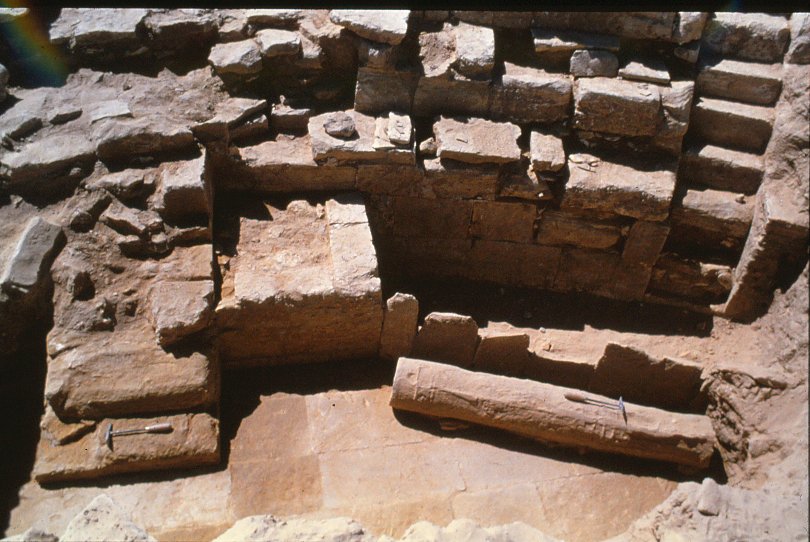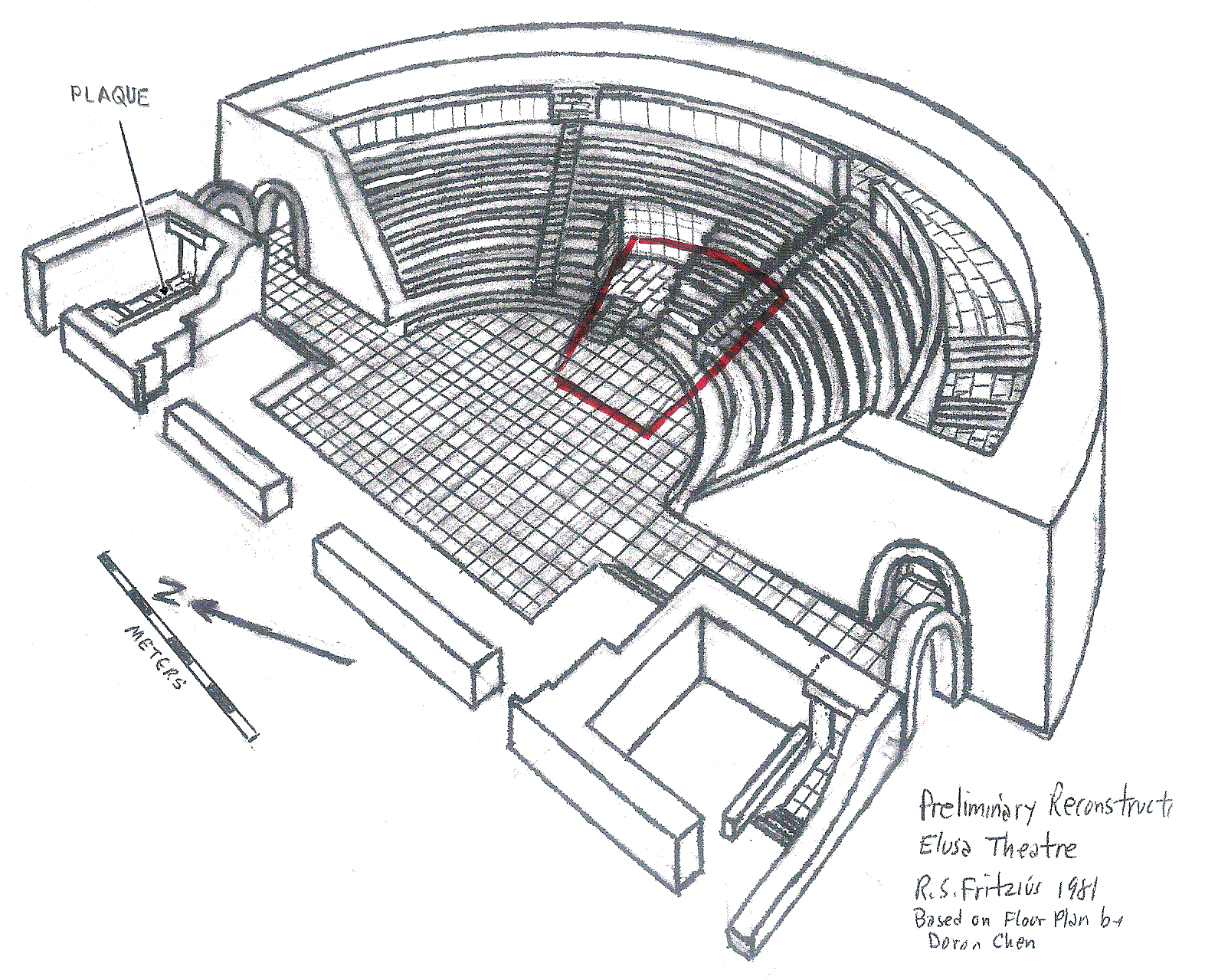Elusa Theatre Inscription

Limestone plaque found in the theatre at Elusa, Israel in 1980. Picture by E. Jerry Vardaman
Analyzed Greek text, courtesy of Professor Negev
|
|
In three places (3.1, 5.4, and 6.7) Negev replaces κ with χ. Text in parentheses is added for clarity. Here are two translations of the plaque's text. Avraham Negev During the governorship of the most magnificent and most glorious Flavius Demarchus was made the pavement of the old theatre, up to the old pavement, by the charge of the citizen Abraamius son of Zenobius. In year 349. Year 349 A.E. = A.D. 454/5. Nicholas Zachary
Zenobius, a native of Elusa and renowned teacher of rhetoric in Antioch, Syria, died in Antioch in A.D. 355. The plaque dates from A.D. 454/455. According to Professor Negev, those two facts allow us to speculate that the pavement mentioned was laid to commemorate the 100th anniversary of the death of Zenobius.
The plaque was found about 12 meters to the left of the center of the above view during excavations in 1980 on behalf of the Hebrew University of Jerusalem, the Israel Exploration Society and Mississippi State University, under the direction of Avraham Negev.(1)
The area outlined in red approximates the camera's field of view (previous image). Floor tiles are about 0.5 meter on a side.
Here is a site map of Elusa showing where the plaque was found. The map is a
tracing from an aerial photograph. (The scale is approximate.) 1980 excavation
areas are shown in green. Camp facilities (cleared out ruins) are
shown in orange. [Added 7 Feb 2012.]
 Elusa Archaeological Site in 1980 (2)
References
(2) Negev, Avraham, Nabatean Archaeology Today, New York
University Press, 1986.
Related LinksAl-Khalasa - Revolvy The Madaba Mosaic Map - Discussion: 109. Elusa - Franciscan Cyberspot www.christusrex.org/www1/ofm/mad/discussion/109discuss.html - [Link does not work now.] |
Contact: R.S. Fritzius at:
fritzius@bellsouth.net

